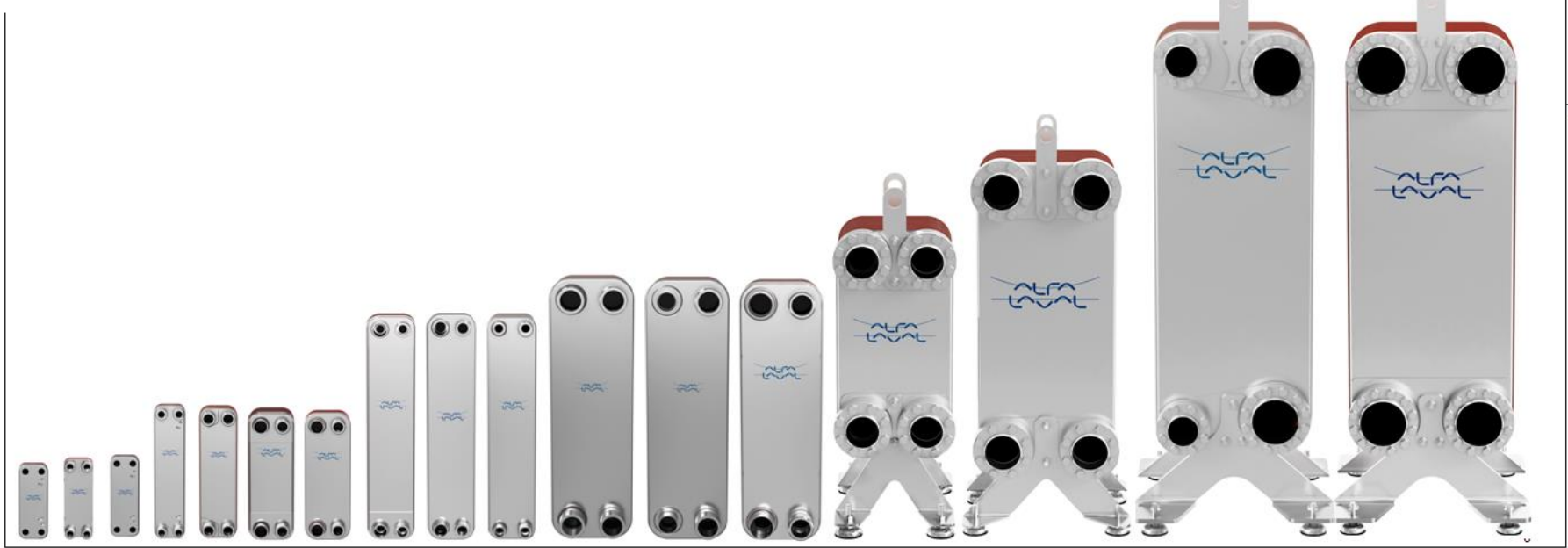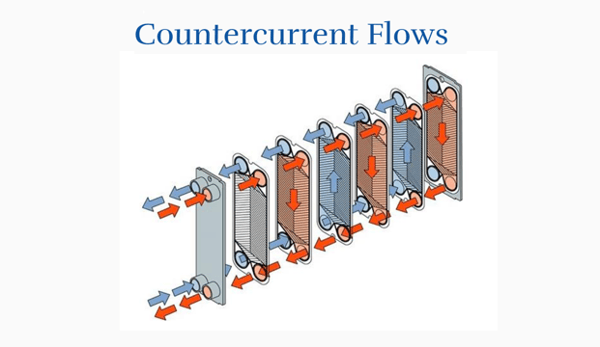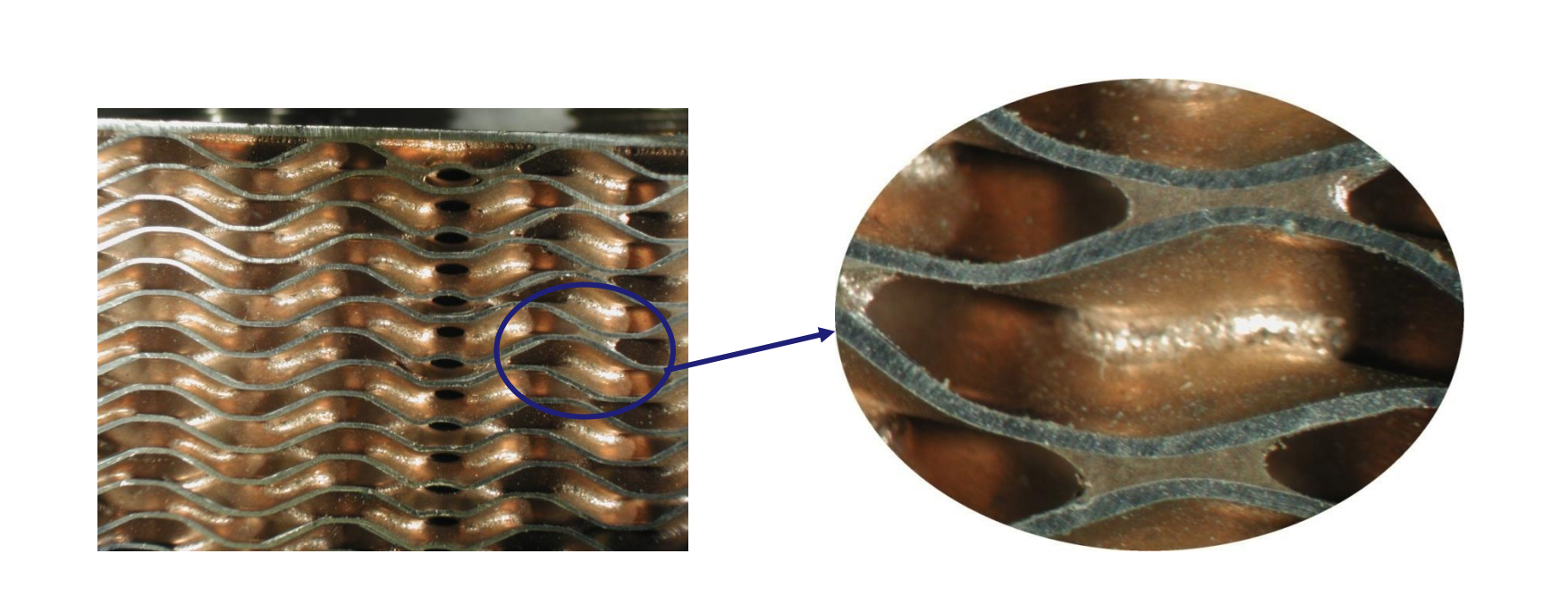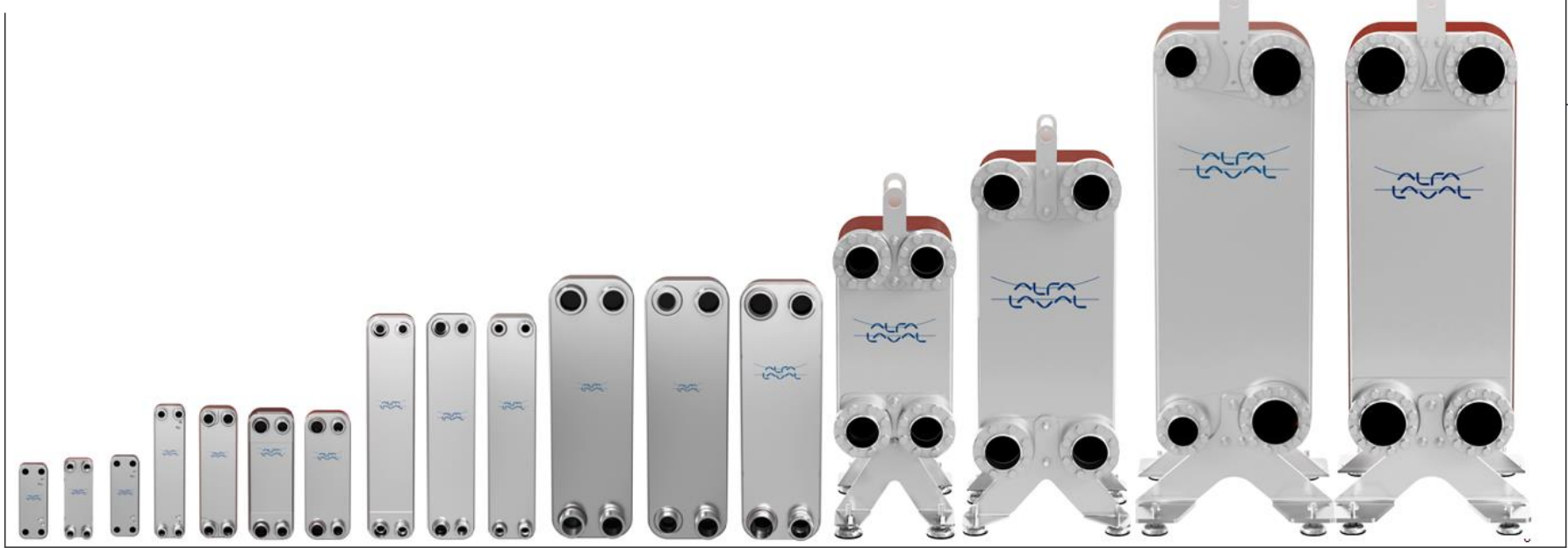Choosing an equipment to transfer the fluid heat in production processes is vital for the performance and efficiency of our customers.
Our strong alliance with Alfa Laval guarantees not only prime quality heat exchangers, but also the support of the leading manufacturer. Appart from the brand’s worldwide recognition, we advocate for what the benefit of choosing an Alfa Laval heat exchanger means to our customers.

What is a heat exchanger used for?
This equipment is gaining field in the refrigeration industry thanks to its versatility and efficiency. Even though industrial applications are very diverse, the solutions it offers are pretty concrete:
- Transfers temperature from one fluid to another, heating a cold fluid through a higher temperature fluid.
- Reduces a fluid’s temperature through a lower temperature one, helping cool the fluids involved in the productive chain.
- It allows a fluid to reach its boiling point.
- It allows condensing a fluid in gaseous state through its contact with a cold fluid.
If you constantly have to heat or cool down a fluid to keep your production going, the heat exchanger could be a very useful piece of equipment for you.
135 years of excellence in heat exchangers
Established in 1883, Alfa Laval stands out because of its mission, which focuses on its client’s growth and the optimization of their production. By picking one of their products, our customers choose:
- World class quality.
- A standardized product, no matter the region or production site.
- Traceability in all its components.
- High pressure performance.
- Equipment 100% waterproof tested.
- Certified material with unbeatable guarantees.
Alfa Laval brazed plate heat exchangers (BPHE)
In 1997, Alfa Laval released the brazed plate heat exchangers to the market. Since then, the brand has continuously optimized the product’s design and performance, making them an excellent alternative.
Today, this equipment is used in a great variety of industries thanks to its reliability, ease of installation and easy maintenance. They are made of plates welded with copper, forming a pack of plates. This makes its thermal efficiency much higher, making this an advantage when compared to the hull and tube exchangers.
Operation of a BPHE exchanger
A key point in this type of equipment, is the duct that is formed between two of its plates, allowing the two fluids to pass alternately through the plates. This makes it possible for the fluids to circulate in countercurrent to increase the efficiency of heat transfer.

Advantages in the design of a BPHE exchanger
- Thanks to its welding, the BPHE exchanger eliminates the needs for seals and thick frames.
- Its composition reaches excellent levels of resistance to high pressure and thermal wear, allowing a wide variety of applications.

Advantages in the manufacture of a BPHE Alfa Laval heat exchanger
Known for their excellence, the Alfa Laval exchangers go through a meticulous quality control process throughout its manufacture:
- Made with copper welding and corrugated plates.
- Manufactured in vacuum ovens at high temperatures.
- Joints at each point of contact, increasing the resistance of the equipment.
- Subjected to leak tests.
Advantages in the implementation of a welded plate heat exchanger
Installing this type of equipment is pretty easy, and its performance is really versatile. Whatever their use, integrating it into a refrigeration system is a guarantee for producers:
- Low investment costs: Thanks to its compact design and high heat transfer range, these heat exchangers reduce the amount of material used in their manufacture, making them much more profitable for the industry.
- Low installation costs: The flow channels of the BPHE exchangers reduce the use of pipes and valves, making their installation much more efficient. In addition, thanks to its design, it requires much less space to install.
- Low dirt generation: Corrugated heat exchanger plates optimize cleaning and reduce equipment wear.
- High durability. This type of equipment has a high resistance to high pressure and since it has no packaging, is has a very low risk of leakage.

How to know if this equipment is right for your project
Thanks to its design and manufacture, this equipment can work in different situations, either with a heat pump, chiller or air conditioner. Some of the more frequent applications for the BPHE heat exchangers are:
- Heating, venting and cooling systems (HVAC).
- Tap water treatment and service water.
- Solar heating.
- Chiller.
- Air conditioner.
- Oil cooling for hydraulic applications.
However, as in any industrialized refrigeration equipment acquisition, the quotation and installation must always be advised by a specialist. It will evaluate the needs of each project and consider the feasibility to install an Alfa Laval exchanger.
Related
Discover more related articles

Ammonia as a refrigerant: an alternative in your natural refrigeration...
Refrigeration systems with natural gases will set the pace for many industries, improving not only energy efficiency but generating a greater...
Read more »
The refrigerant evolution: Optimizing efficiency and reducing the...
Within the industrial cooling domain, refrigerant play an essential role in guaranteeing a proper system response. However, in the last years, their...
Read more »
